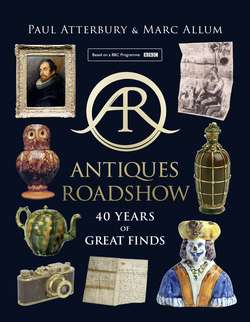Читать книгу Antiques Roadshow: 40 Years of Great Finds - Paul Atterbury, Paul Atterbury - Страница 14
A RENAISSANCE GOLD PLAQUE
ОглавлениеObjects of high quality and value made before the seventeenth century have always been Roadshow rarities, mainly because they have been well known, appreciated and documented for centuries. Also, relatively few of importance remain in private hands. There was, therefore, great excitement in Farnham’s Sports Centre, in 1991, when a lady brought in a magnificently modelled gold plaque made in Italy between 1570 and 1580. Simon Bull, the Roadshow’s clock specialist on that day, was luckily on hand to share his great knowledge of Renaissance works of art with the owner.
Today the Renaissance, which started in Italy in the founteenth century, is universally acknowledged as a period of extraordinary creativity in the development of modern Western culture. All art forms – architecture, painting, sculpture, metalwork and jewellery, ceramics and glass, textiles, even arms and armour – were affected by a style that drew most of its inspiration from the Classical world, and its leading artists – Leonardo, Michelangelo, Cellini and so on – have long been household names. Also important were the great dynastic families of Italy, the Medici and the Borghese, who competed to have the finest things from the greatest artists and craftsmen of their time.
Pierced and set with cornelians, the solid gold plaque is modelled in relief with a scene depicting Atalanta hunting the great boar that had laid waste the lands of King Oineus, sent as a punishment for his failure to give thanks to Artemis after a successful harvest. At the heart of the lively scene, Atalanta has just fired the arrow that will bring down the boar. This classical Greek legend was popular with Renaissance artists.
Simon knew the legend and, more importantly, he knew of similar gold plaques in a museum in Berlin. He suggested that together they formed a set of six, originally intended to be mounted on a magnificent ebony cabinet made for the Borghese family. At some point, the cabinet had been lost or destroyed, but the plaques had survived, despite being made of gold. At one time the plaques were attributed to Cellini, but Simon knew that this was not now the case, though he was unable to identify the actual maker.
The owner knew little, except that it had been bought by her father in a sale at a time when such wonderful things were still accessible to a collector. Valued at £50,000 in 1991, this Renaissance gold plaque would now fetch at least ten times that, or even very much more.
